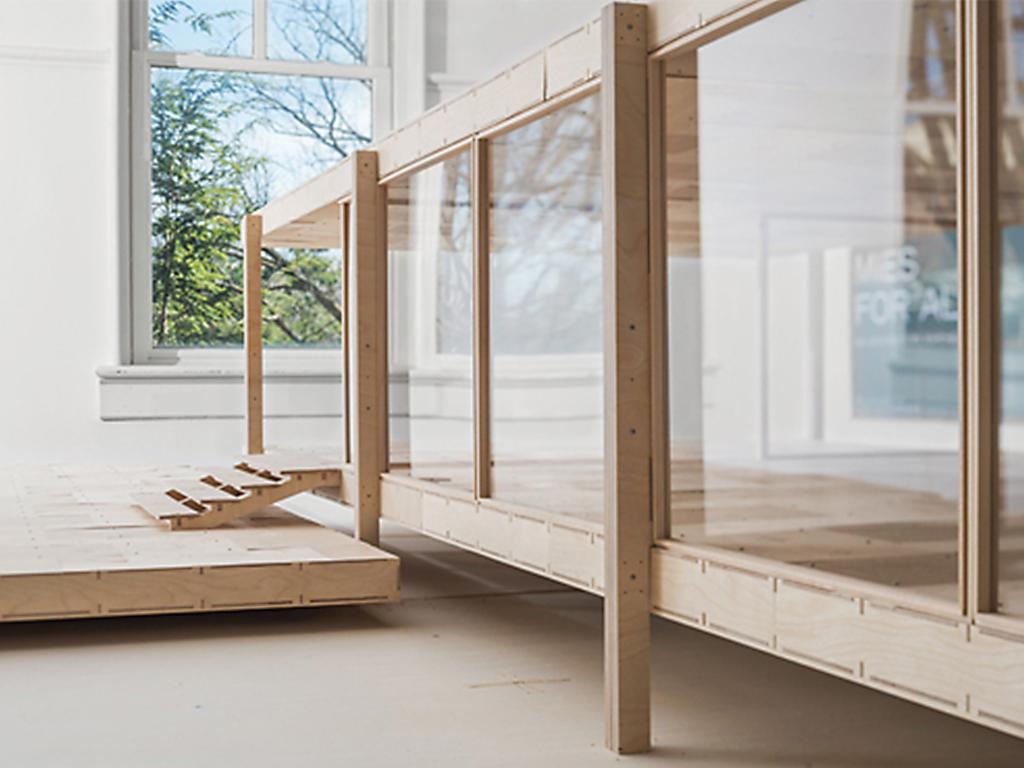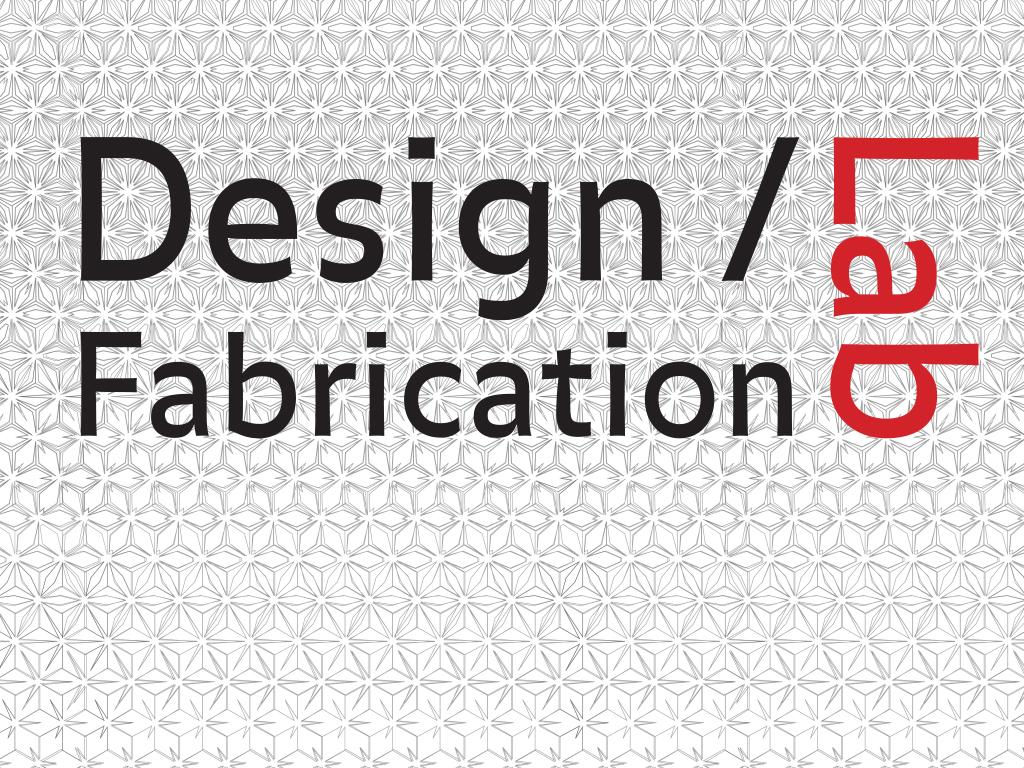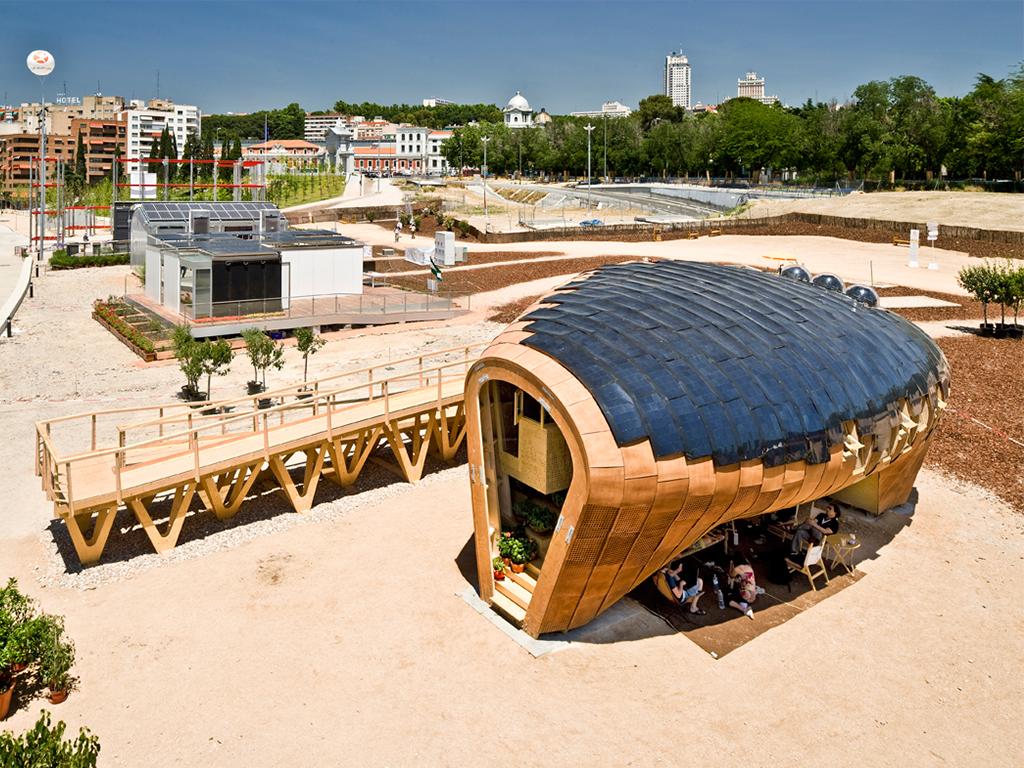To explore the fascinating (though sometimes tumultuous) landscape of modern architecture, Waag recently hosted an evening of presentations from five architectural experts within the Design/Fabrication Lab project to discuss their current work in the context of their changing profession. Over the course of the evening, we learned how the building processes that shape our cities and neighbourhoods are changing.
A changing discipline
Over the past few years, architecture as a discipline has become radically different—so different that some experts fear that the architect as we know it is becoming obsolete. There is no doubt that way we shape our urban environment is changing: traditional power structures are shifting, designers are investigating new building materials, and more companies are looking towards the potential of digital technologies. Yet, there seems to be a strange schism between what could happen within the industry and what does happen.
According to Matthijs Bouw (of One Architecture), this tension between possibility and reality is rooted in an broken, archaic industry rather than in a lack of education. As fellow for the University of Pennsylvania, Bouw insists that architecture students learn a lot about innovative, digital techniques in university—but rarely work on progressive projects after graduation. Along these same lines, Gary Rohrbacher (of Filson and Rohrbacher) noted that the traditionally static and hierarchical relationships within the architectural world are changing—but not necessarily for the better. Over the past fifty years, architects, contractors, and owners have become increasingly differentiated, segmented, and adversarial. Rohrbacher also insists that the uneven distribution of digital technologies within the discipline means that smaller companies often cannot afford the same luxuries that larger companies enjoy.
Towards a new model
Yet, there are always pioneers willing to lead the way in reinventing the way their profession does business. Two of the main themes of the evening were: a focus on emerging technologies that make the use of locally-sourced materials easier, and technologies that allow more people access to the field of architecture. Anne Filson (also of Filson and Rohrbacher), for instance, spoke about their project, “A Mies for All,” which aims to produce an accessible and affordable reproduction of Mies van der Rohe’s classic Farnsworth House. Their modern Farnsworth design can be cut by anyone with access to a CNC router and standard lumber. And because the individual pieces of the house slot together in a relatively intuitive way, an owner could (theoretically) build it themselves using locally sourced material in a maker space. Similarly, Tosja Backer (of DUS Architects) presented the 3D Print Canal House—a project that addresses the broken nature of the building sector. The distributed nature of the system makes for a lot of travel, a lot of waste, and a pretty big carbon footprint. The solution? Distributing digital design files globally, and building everything locally using technologies like 3D printing.
Jelle Feringa (Odico formwork robotics / EZCT Architecture & Design Research) talked about changing what it means to be an architect—proposing new models in which architecture becomes less of a service and more of a product. Feringa, in particular, is a designer who executes his ideas using robotics. He believes that architecture is constrained by sentimentality and nostalgia, and that—while everything is possible in our age—nothing is happening. “Why go backwards when you can buy a bunch of robots and go forward?” he quipped.


